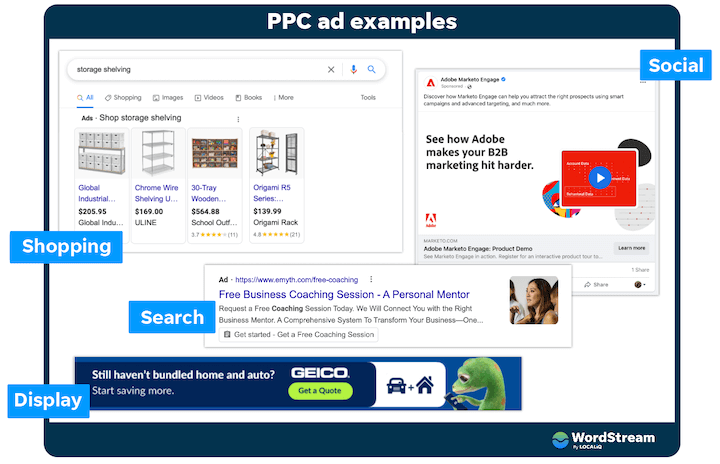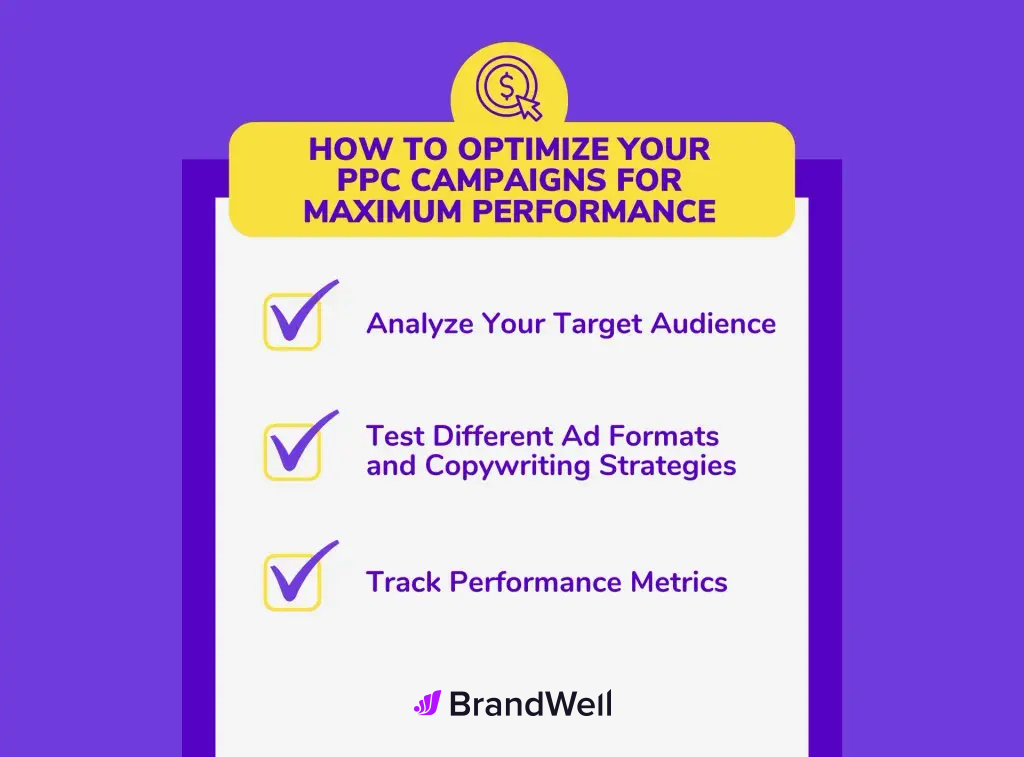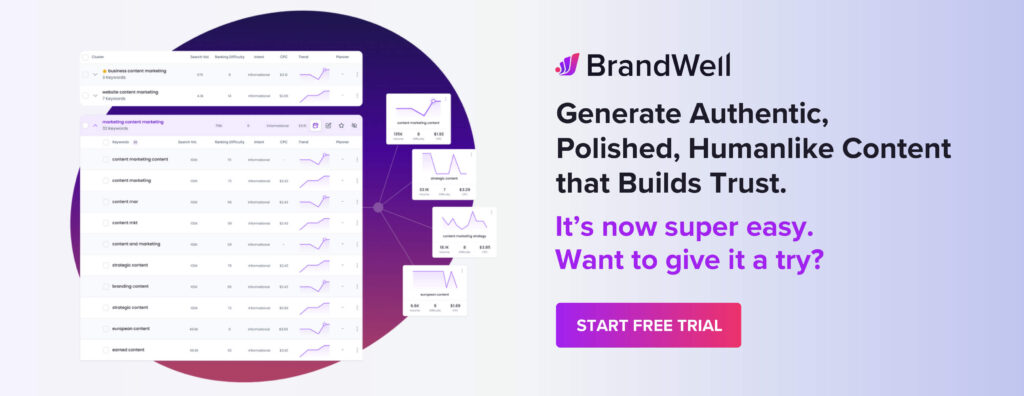Discover top guides, trends, tips and expertise from AIO Writers

Pay-per-click (PPC) advertising can be a great way to generate income from a popular blog or website. But how exactly do you make money with pay per click ads?
How to do PPC and how to get advertising on your website to start turning a profit?
PPC ad campaigns allow you to “buy” space in search engine results to display ads that promote your brand or product. The more people see your ads, the more they will know about how your offerings can benefit them.
When it comes to PPC marketing success, the numbers don’t lie.
- PPC increases brand awareness by 80% — even higher for some brands.
- Paid advertisements capture 65% of web traffic compared to just 35% of clicks for organic results.
- Paid ads earn $2 for every $1 spent for a whopping 200% ROI.
If you’re still not taking advantage of paid search ads, you could be missing out!
Let’s take a closer look at how to run a well-optimized PPC campaign and make money with pay per click ads.
Table Of Contents:
- What is PPC Advertising?
- Types of PPC Marketing
- How to Make Money with Pay Per Click Ads
- How to Get Advertising on Your Website
- Managing Costs and Maximizing ROI with PPC Advertising
- FAQs – Make Money with Pay Per Click
- Conclusion
What is PPC Advertising?
Pay-per-click advertising or PPC is an online advertising strategy used to drive targeted traffic to websites. It involves placing ads on search engines and other websites to generate clicks from interested users. PPC campaigns are typically managed through a specialized platform such as Google AdSense or Bing Ads.
How Does Paid Advertising Work?
In pay-per-click ads, the advertiser only pays when someone actually clicks on their ad and visits their landing page.
The major upside of PPC advertising is its capability to quickly and accurately reach target customers with focused communication.
With proper optimization, you can ensure that your ads are seen by people who have already expressed interest in your product before they even land on your site. This increases conversion rates significantly.
By tracking clicks, you can easily measure the return on investment of each PPC campaign to determine how successful it has been.
Different PPC platforms provide an easy way for you to manage your search engine ads. These include Google Ads (formerly AdWords), Microsoft Advertising (formerly Bing Ads), and Yahoo Gemini.
Selecting PPC services that best meet your requirements is essential for optimizing performance across different channels.
Why is PPC so Popular?
One of the reasons why PPC is so popular is because it’s easy to set up and manage. With Google Adwords, you can quickly create campaigns in minutes and start generating traffic right away. Plus, you don’t need any technical knowledge or coding experience – anyone can do it.
Another reason why pay-per-click ads have become so popular is that they allow advertisers to target very specific audiences with their ads. You can choose who sees your ads based on age, gender, location, interests, and more — making sure that your ad dollars are well spent by reaching people who are likely to be interested in what you have to offer.
Finally, one of the biggest advantages of running ads over other forms of online marketing such as SEO or content marketing is that it’s cost-effective. With PPC campaigns you only pay when someone clicks on your ad, so if no one clicks on them, then you won’t spend anything at all. This makes it ideal for small businesses with limited budgets who want maximum ROI from their digital marketing efforts.
Types of PPC Marketing
Search PPC is a type of paid advertising that appears in search engine results. It allows businesses to target potential customers who are actively searching for the products and services they offer. When someone searches for a specific keyword or phrase, advertisers can bid on those terms and have their ads appear at the top of the search engine results page (SERP).
Display ads are typically ranked according to how much an advertiser is willing to pay per click, with higher bids resulting in a better placement. Search PPC campaigns can be tailored to reach very specific audiences by targeting keywords related to demographics, interests, location, and more. This helps ensure that only relevant traffic reaches your website or landing page.

Screenshot from WordStream
Social media PPC is another type of paid advertising available on popular social networks such as Facebook Ads, Instagram Ads, and Twitter Ads. Advertisers create campaigns using images or videos along with text copy designed to engage viewers and direct them toward a website or landing page where they can take action – like signing up for a newsletter or making a purchase.
Social media platforms allow you to target users based on age, gender, location, and interests which makes it easier for brands to connect with their ideal audience.
Many platforms offer advanced features such as retargeting which enables marketers to show ads to people who have already interacted with their brand online – either through visiting their website or engaging with content posted on social media channels.
How to Make Money with Pay-Per-Click Ads
Making money with pay-per-click involves a strategic approach, whether you’re an advertiser looking to promote products/services or a publisher seeking to earn revenue by displaying ads on your platform.
Let’s break it down for both perspectives:
For Advertisers:
Identify Target Audience: Knowing who you are targeting with your ads is key to success when it comes to PPC advertising. Start by creating buyer personas based on demographic data such as age, gender, location, interests, and behaviors. Once you have identified these characteristics, use them to refine your target audience so that only those most likely to convert will see your ads.
Targeted Keyword Selection: Advertisers conduct keyword research to identify relevant phrases that their target audience is likely to search for. These keywords will serve as the basis for their ad campaigns. Focus on a mix of broad and long-tail keywords to capture various levels of user intent.
Set Ad Budgets: Advertisers set a daily or monthly ad budget for their PPC campaigns, determining how much they are willing to spend on each campaign. This helps them control their advertising costs. Monitor your spending regularly and adjust your budget allocation based on the performance of different campaigns and keywords. Allocate more budget to high-performing areas to maximize results.
Bid on Keywords: Advertisers bid on relevant keywords, competing with other advertisers for the top ad spots. The amount they bid per keyword will affect how often their ad is displayed and how much they pay per click.
Persuasive Ad Copy: Ad copies should be concise, persuasive, and relevant to the user’s search intent. Highlight your unique selling proposition and include a strong call-to-action (CTA) to encourage users to take the desired action, such as making a purchase or filling out a form. Experiment with different copywriting strategies such as using persuasive language like “get 50% off now” or offering discounts if customers act quickly to increase click-through rates (CTR).
Landing Page Optimization: The landing page is where users land after clicking on your ad. It should provide a seamless transition from the ad and offer relevant information. Optimize for fast loading times, mobile responsiveness, and a clear path to conversion. Ensure that the landing page content aligns with the ad’s messaging.
Ad Placement: Advertisers choose where their ads will be displayed, such as on search engine results pages (SERPs), social media platforms, or other websites. This depends on their target audience and the type of ad campaign they are running.
Conversion Tracking: Implement conversion tracking tools like Google Analytics to measure the success of your campaigns. Track actions such as form submissions, purchases, or other valuable interactions. This data helps you identify which keywords and ads are driving actual results and adjust your strategy accordingly.
Ad Extensions: Ad extensions provide additional information to users and can improve ad visibility. Use extensions like site links to direct users to specific pages, callout extensions to highlight additional benefits, and structured snippets to showcase specific features or offerings.
A/B Testing: To optimize your ads for maximum performance, it’s important to test different ad formats such as text-based vs image-based ads or carousel vs single image ads. This will help determine which ads perform best for each campaign objective (e.g., clicks, conversions). Experiment with different headlines, ad copy, and visuals to optimize your campaigns over time.
Geo-Targeting: Geo-targeting allows you to show your ads to users in specific locations. Customize your campaigns to target regions where your target audience is most concentrated. This improves the relevance of your ads and increases the likelihood of conversions.
For Publishers:
Quality Content: Quality content is the foundation of a successful publishing platform. Create informative, engaging, and valuable content that resonates with your target audience. This not only attracts more visitors but also keeps them coming back.
Google AdSense: Google AdSense is an advertising program that allows publishers to display ads on their websites and earn money when users interact with those ads. Joining AdSense is a straightforward way to monetize your content through PPC advertising.
Niche Focus: Focusing on a specific niche allows you to target a more defined audience. Advertisers often prefer to place their ads on sites that cater to a particular niche, as it ensures their message reaches a more relevant audience.
Optimized Ad Placement: Experiment with different ad placements on your website to find the positions that generate the most clicks. Common locations include above the fold, within content, or in sidebars. Balance the placement for visibility without compromising the user experience.
Responsive Design: Ensure your website is responsive and provides a seamless experience across different devices, especially mobile devices. Many users access websites from smartphones, so a mobile-friendly design is essential for maximizing PPC revenue.
Traffic Analysis: Tracking performance metrics such as CTRs, impressions served per day/week/month, cost per click (CPC), and conversion rates allows marketers to identify trends in user behavior and adjust their campaigns accordingly. This can help maximize ROI from their ad spend.
For example, if CTRs are low but CPC is high, then reducing bid prices could lead to more impressions being served at lower costs which would result in higher overall profits.
Engage with Advertisers: Actively engage with potential advertisers in your niche. Building relationships can lead to direct advertising opportunities beyond PPC. Consider offering sponsored content or other collaboration options that benefit both parties.
Diversify Revenue Streams: While PPC can be a significant source of revenue, consider diversifying your income streams. Explore affiliate marketing, sponsored content, memberships, or selling products/services directly. This reduces reliance on a single source of income.
Remember, success in PPC, whether as an advertiser or publisher, requires ongoing optimization, adaptability, and staying informed about industry trends. It’s a dynamic landscape, so be prepared to adjust your strategies based on performance data and market changes.

How to Get Advertising on Your Website
When choosing PPC platforms to run your online ads, it’s important to compare and contrast the features and benefits of each option. For example, if you’re looking for more targeted ads, then Facebook or Twitter might be better suited for your needs than Google or Bing.
Once you have chosen a PPC provider, set some clear objectives and establish a budget to ensure that your PPC campaign remains within financial limits. Determine how much money you can afford to spend per day/week/month on online advertising costs so that you can control your ad spend.
Now comes the fun part – creating effective online ads that will draw in potential customers. Start by brainstorming ideas based on who your target audience is (demographics) and what message resonates with them best (tone). Then use compelling copywriting techniques such as storytelling or humor to grab their attention.
To make sure your ads show up in relevant search results pages, include niche keywords in your ad copy.
What if there was a tool to automate your ad copy? BrandWell has over 40 AI agents that are ready to lend a helping hand, whether you’re writing copy for Facebook, LinkedIn, Reddit, Quora, or YouTube.
Finally, consider testing out different visuals like videos or images alongside each ad variant so you can see which version appeals to people the most.
Running ads on your website can be advantageous for driving leads and boosting sales, but it is critical to set reasonable objectives, allocate funds prudently, and craft advertisements that will attract clicks.
Now let’s take a look at how to manage costs and maximize ROI with PPC advertising.
Managing Costs and Maximizing ROI with PPC Advertising
CPC rates vary depending on the PPC platform you’re using as well as the competition in each market. It’s important to understand what factors influence CPC so that you can make informed decisions when setting up your campaign budget.
For example, certain industries have higher average CPCs than others due to increased competition or more expensive keywords. If you want to target these markets, it may be necessary to adjust your budget.
Leveraging automation tools to reduce the manual workload is a great way for advanced-level PPC professionals to save time and money while still maintaining control over their campaigns. Automated bidding strategies like Target CPA or Maximize Conversions can be used as shortcuts, allowing advertisers to set their desired goals and let algorithms do the rest.
By utilizing automated processes, savvy marketers can free up valuable resources which can then be allocated elsewhere to optimize PPC performance.
One of the most powerful features of PPC advertising is its ability to track conversions from clicks through purchase completion. This helps marketers determine which ads are performing best and where they should focus their efforts moving forward.
Conversion tracking also allows advertisers to identify opportunities for improvement in terms of ad copywriting, targeting accuracy, and landing page design.
FAQs – Make Money with Pay-Per-Click
How do I set up PPC advertising?
- Define your goals.
- Define your target audience.
- Optimize your landing pages.
- Create your ads.
- Analyze and optimize your PPC campaign strategy.
How do I get paid with PPC?
You can generate ad revenue in two ways: by placing your own advertisements on your blog posts or running pay-per-click campaigns for your affiliate programs.
If you want to advertise on Google, you can use Adwords, but if you want to display Google’s advertisements on your site, then you use AdSense.
How do I get PPC on Google?
To get PPC on Google, you must first create an AdWords account.
Once you have opened your AdWords account, decide on the type of campaign and establish a budget.
After that, you can select the keywords for which you want to target ads and write ad copy for each keyword group.
Finally, link your website or landing page with your Ads Manager account so customers can be directed to it when they click on one of your ads.
Once all these steps are completed, you should have a functioning PPC campaign running on Google’s platform.
Conclusion
Search engine advertising can be a great way to generate revenue for your website. By optimizing and planning carefully, you can ensure that your PPC campaigns are as effective as possible, leading to increased revenue and higher ROI.
If done correctly, PPC ads will bring in more customers than any other form of online marketing.
By following these steps on how to make money with pay-per-click ads, you’ll soon have successful ad campaigns that drive conversions while keeping expenses low.
Run ads on autopilot by writing your copy with BrandWell! Your PPC specialist can focus on more important things — like generating more revenue — if you leave all the copywriting of your search ads to AI.

UNLOCK YOUR POTENTIAL
Long Headline that highlights Value Proposition of Lead Magnet
Grab a front row seat to our video masterclasses, interviews, case studies, tutorials, and guides.



